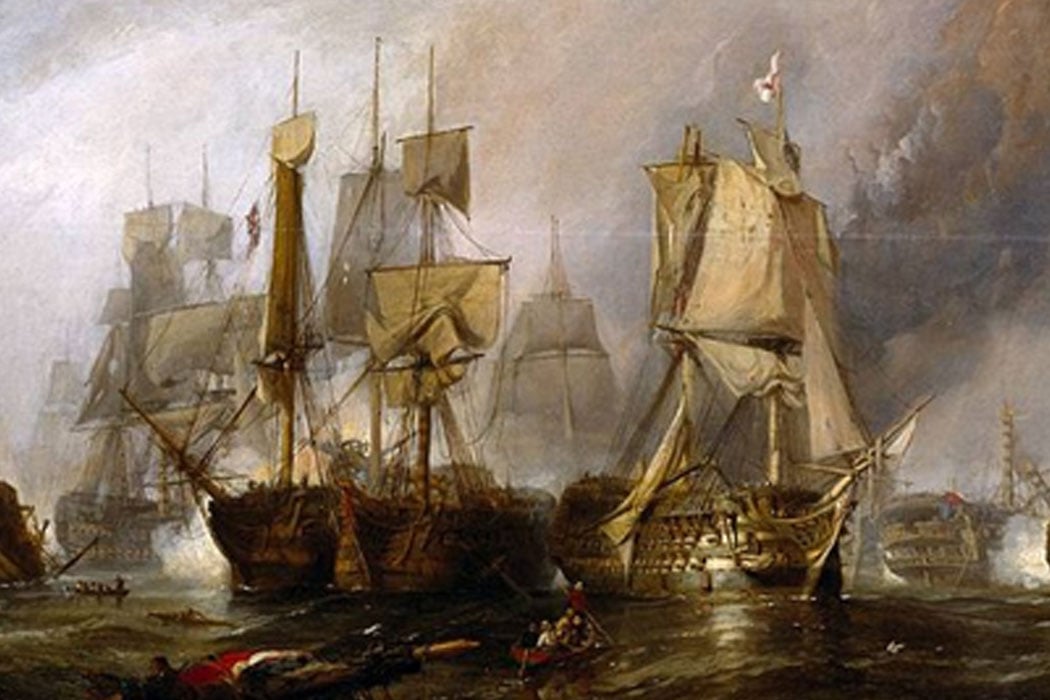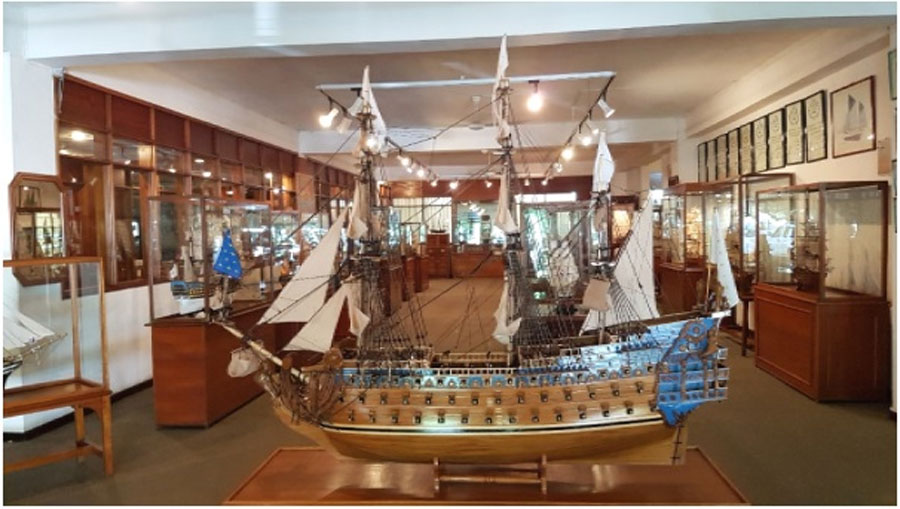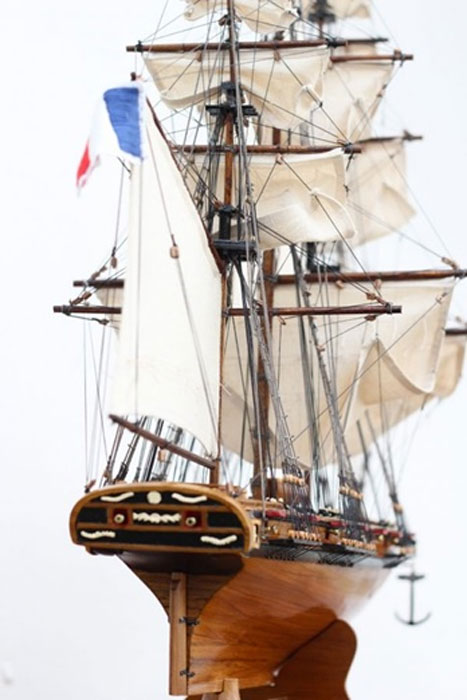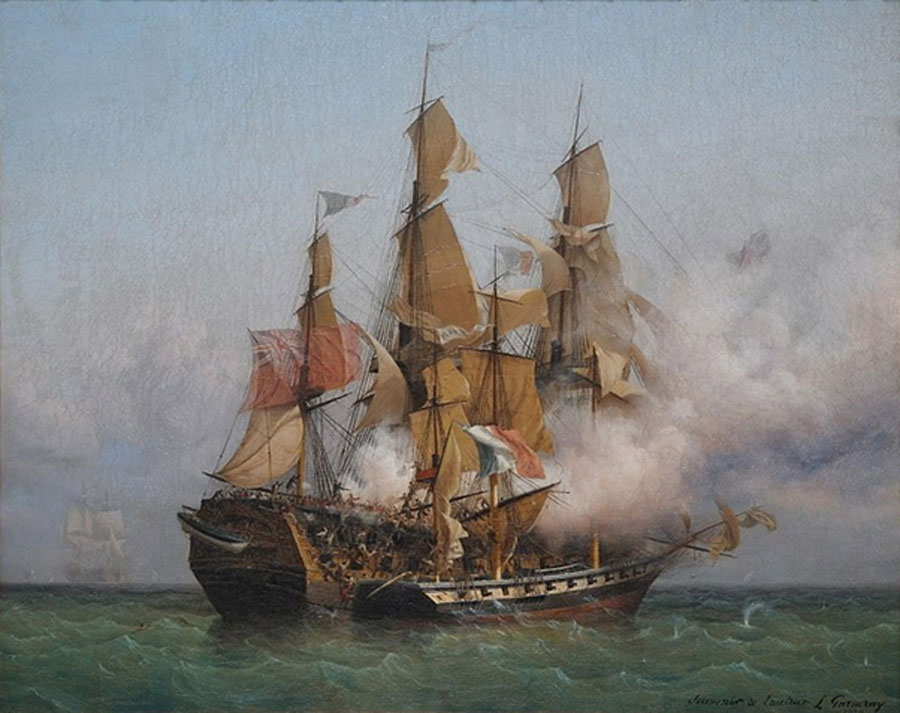
The Age of Sail Recaptured: Model Maritime History in Mauritius
Gazing at model replicas of the HMS Victory and the Bucentaure one conjures up the naval Battle of Trafalgar; breathing the toxic gun smoke, gagging on the smell of gun powder, deafening booms of cannon fire echoing, and the horror of watching men dying agonizing deaths on deck with limbs being blown off or jumping into the raging sea to escape a burning ship. The model of the Confiance, paints a canvas of the corsair Robert Surcouf cruising the Indian ocean like a shark preying on British ships, heavily laden with cargos of treasures; and then there is the Vasa, dubbed the Ship of Fools that sunk before on maiden voyage. Such are the tales on exhibition in the showroom of Historic Marine, a workshop on the island of Mauritius in the Indian Ocean, that captures the Age of Sail in the exact scale reproduction of famous historical vessels.

The Soleil Royal leading an armada of model ships (Image: Historical Marine)
French Corsair Robert Surcouf’s Confiance
Robert Surcouf (1773 –1827) defied his parents’ wish for him to become a priest and turned to privateering instead. The Indian Ocean became this corsair’s private playground where he captured more than 40 ships between 1789 and 1808, before retiring from the sea to set up a successful commercial shipping enterprize.
The Confiance, was commissioned in Bordeaux in 1797 by Jacques Comte and in 1799 she sailed to Isle de France (Mauritius) and was entrusted into the capable hands of Robert Surcouf in 1800. The Confiance took to the Indian ocean like a duck to water and soon earned the reputation of a formidable pirate ship among the British, that had the capability to escape difficult situations with the sleekness of a cat. She cruised off the Sunda Strait, between the Indonesian islands of Java and Sumatra, where she captured an American ship and deftly escaped being captured herself by the frigate USS Essex. She set sail for the Seychelles, only to narrowly escape a British ship and sailed on to cruise the Bay of Bengal. On September 19, 1800, the Confiance captured the Prize from Calcutta and sent the 85 crew prisoners to Mauritius along with the captured vessel. Surcouf then steered for Ganjam, where he captured three smaller ships.

Model of the Confiance (Image: Historic Marine)
Within three weeks of capturing the Prize, on October 7, 1800, off Sand Heads near Calcutta, Surcouf spotted the Kent, under command of Captain Robert Rivington. The Kent was considered a fast ship and a threat to be reckoned with due to its 40 guns, but as fate would have it, she had just rescued the stricken crew of the Queen, that had been destroyed by fire and was therefore burdened with 437 men. Surcouf engaged battle and within an hour and a half, succeeded in boarding the Kent. Surcouf allowed his crew an hour to pillage the ship, but strictly prohibited access to the ladies on board, which also saved the lives of General Frederick St. John and his wife Arabella Craven. The prisoners were released to a merchantman on the way to Port Louis, the capital of Isle de France (Mauritius). The first officer of the Confiance sailed the captured Kent into the port, alongside the Confiance, much to the praise of the French and the irritation of the British admiralty, who promptly issued a reward on the head of Surcouf.
The Confiance was fitted out and armed and in January 1801 set sail for France. On the way Surcouf accosted and captured more ships including the Portuguese Ebre, which he ransomed for 10,000 piastres. But the Confiance’s luck almost ran out when she unwittingly ran into a trap set by the British. She managed to escape the blockade by dumping her cannon, anchors, chains and whatever could be spared into the sea. She arrived safely at La Rochelle on April 13, 1801, with a cargo valued at 2 million francs.





